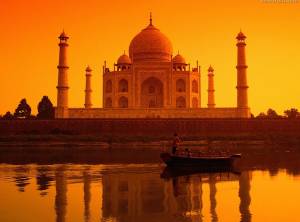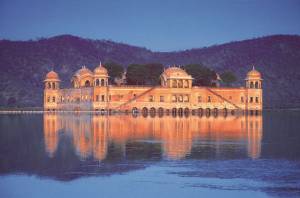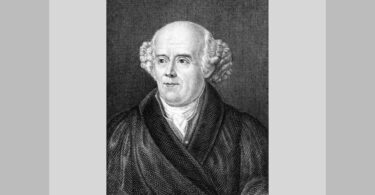 What do you expect when you leave Europe for the purpose of enhancing your homeopathic skills and in search for a good education? How many of you (outside India) have not thought about it at least once? Aren’t there many myths about Homeopathy in India? There are myths about patients lining up in “Lakhs” (the Indian expression for millions), about the treatment of acute infectious diseases, treatment in epidemics and treatment of advanced pathological conditions? Further there exists the idea about great masters of homeopathy, who see more than 200 patients a day and still treat them successfully, and there is the vague knowledge about families of homeopaths, where their homeopathic expertise is almost hereditary. At least, for me, I had this image to a certain extent.
What do you expect when you leave Europe for the purpose of enhancing your homeopathic skills and in search for a good education? How many of you (outside India) have not thought about it at least once? Aren’t there many myths about Homeopathy in India? There are myths about patients lining up in “Lakhs” (the Indian expression for millions), about the treatment of acute infectious diseases, treatment in epidemics and treatment of advanced pathological conditions? Further there exists the idea about great masters of homeopathy, who see more than 200 patients a day and still treat them successfully, and there is the vague knowledge about families of homeopaths, where their homeopathic expertise is almost hereditary. At least, for me, I had this image to a certain extent.
After having travelled throughout the country, from south to north, I assume that all of it is true, with reservations. This is a report on what I learned and experienced as a professional, during my travels to different homeopathic centres, as well as during my visit to a very diverse country rich in myths. It will give you an idea about what awaits you when travelling through India, as well as an outline about whom to address when you want to learn more about homeopathy. For Indians, it may provide motivation to search for further training in centres that teach classically.
First, let me share some background information. I was trained as a medical doctor (MBBS) and had the opportunity to learn some basic homeopathy with the students’ initiative for homeopathy (SIH – www.sih.at) during medical studies. I came in touch with homeopathy in my childhood, during which, my brothers and me were treated with homeopathy. Healing for me always meant to do the least harm, and to integrate all human functions into my treatment options. In medical school, this aspect was, of course, not regarded to be important and I had to search for alternative education.
In homeopathy, I discovered the idea of stimulating the organism’s immune system to overcome the disease in its whole extent. Even if the mechanism of action is not yet known, this fascinates me. The regulatory status of homeopathy in Europe is very diverse and if any education is provided by Universities, it mostly consists in familiarisation courses only. Further training is implemented by the doctors’ chamber or private associations and mostly consists of basic theory and treatment with single doses as described by Hahnemann. Advanced pathologies as well as acute conditions are usually treated with conventional medicine.
The whole scope and power of homeopathy is not encompassed and therefore I decided to visit different homeopathic centres in India in order to develop additional skills. I had seen what beautiful and extended cures were reached with the application of single doses and stayed therefore, a follower of Hahnemann’s pure method of “like cures like”. I contacted principally classical homeopaths for my experience in India and this report may be critical towards other schools of homeopathy.
When I left Europe I was quite excited about the possibility that my expectations would prove true. I was also anxious about my ability to cope with this different culture. India meant to me Hinduism, loud and kitschy religiosity, meticulous art and ornamental architecture, a big mix of cultures, poverty and worn-out western tourists.
I chose Amma’s Ashram in Kerala as a starting point. From her followers “Hugging Amma” is considered to be a saint; her purpose and motto is to “embrace the world”. She travels along the globe and hugs people, but does a lot of social welfare, too. The Ashram is situated in the backwaters of Kerala and is a bewitching place. The colours, the heat, the seaside, the yoga and the temple chants, all let you feel that you arrived into a world full of beauty. The most striking experience was, when I participated in the recycling project, sorting out trash, while the locals were lying lazily at the beach around us and throwing away their rubbish wherever. At this point, I had no clue to what extent waste separation would be an allegory throughout my journey.
On my way to my first homeopathic experience in Bangalore, I passed Munnar, which is a lovely hill-place in the northern part of Kerala. As a whole, Kerala is one of the tidiest and most quiet places in the Indian subcontinent and a good starting point.
In Bangalore, I stayed for a month with Dr. M. Mahesh, whom I met two years before at George Vithoulkas’ academy in Alonissos, Greece. Dr. Mahesh has uncountable experiences with vitiligo cases and other skin pathologies, so we saw many patients with those diseases. We also treated many patients for sterility, cerebral palsy, diabetes and cancer, and also saw psychiatric patients. Mahesh, his wife Seema and his assistants strictly follow Vithoulkas’ approach of single remedies and only repeating or changing the remedy when there is a clear relapse or new remedy-picture.
During the course of treatment, patients are usually handed placebo. I sat in the clinic as an observer and repertorized the cases while he was taking the anamnesis. Whenever there were English speaking patients, I could contribute, or even take the case on my own. Some days I also stayed in the consulting room of his most experienced assistant Dr. Krishnamurti, who has unfortunately left the centre by now. About forty patients were seen in a day. Follow-up depended on the case, but was mostly 1-2 weeks later and usually not longer than a month. The treatment method is well structured and comprehensible, and I learned the handling of chronic cases and could perceive the action of well-chosen remedies.
One weekend we had an excursion to Mahesh’s rural clinic in the northwest of Karnataka. During our visits, I could observe around 100 patients from different cultural backgrounds, who mostly reported very positively about the treatment of their disease. A visit to Dr. Mahesh is important, especially if you have not yet had the opportunity to become familiar with Vithoulkas’ teachings.
 After this first hands-on training, I travelled via Hampi and Hyderabad to Agra and joined Dr. Pareek’s bed-side teaching seminar. On the road I experienced an indispensable part of Indian civilisation, riding 24 hours in a Sleeper-Coach on the Indian railway –with the constant breeze from the open windows. I met all kinds of people. The beggars lingering around you, the hygiene-issues, all give you a notion of India’s quiddity.
After this first hands-on training, I travelled via Hampi and Hyderabad to Agra and joined Dr. Pareek’s bed-side teaching seminar. On the road I experienced an indispensable part of Indian civilisation, riding 24 hours in a Sleeper-Coach on the Indian railway –with the constant breeze from the open windows. I met all kinds of people. The beggars lingering around you, the hygiene-issues, all give you a notion of India’s quiddity.
When I arrived at Dr. Pareek’s centre, I found another extreme of Indian society. Compared to the poverty of the country, the affluence of this homeopathic family and of the attendees of the seminar is hardly comprehensible. Those extremes might strike you often when visiting India. At Dr. Pareek’s clinic, the poor are treated nearly gratis.
The seminar gave a good insight into Dr. Pareek’s method of treatment. In the hospital, where the seminar took place, around ten assistants are working and treatment includes homeopathic remedies as well as surgery. Dr. Pareek’s intention is to give relief to the patient as soon as possible, so they advise surgery in many cases. Otherwise, they always start their treatment with an acute remedy, followed or along with an organ-specific one.
Once they see the patient is in a stable condition and the acute condition has subsided, they search for a constitutional remedy. Both of the doctors, Pareek senior and junior, have extensive knowledge about small remedies and the effects of mother tinctures, which are used along with the homeopathic treatment.
After the seminar, I was able to sit in their daily outpatient clinics (OPD). I must confess that they do not always stay with single remedies. So, in total, I could improve my Materia Medica skills, but couldn’t appreciate many points. It seemed to me that they are hunting prestige to the extent that teaching and practice are not coherent. Their teachings are mainly addressing homeopaths from overseas and even Dr. Pareek’s new book is not available in India (as Narayana publishers from Germany have the copyright). Thus, I left a bit disappointed, as I had high expectations for this visit. In any case, if you pass Agra, have a visit to Fatehpur Sikri, where you can feel the vibes of Sufi-spirit and can manifest your heart’s desire knotting a cord on the adorned walls of the saint’s tomb. The legend says the wish is going to be fulfilled, but if so, you should return and loosen the knot.
 In Jaipur, Rajasthan, I met with Dr. Manish Bhatia, founder and director of Hpathy.com. He’s a passionate teacher, thoughtful homeopath and above all a genuine human being. I came to know about him when reading his paper about mental health in the book Homeopathy and Mental Health Care: Integrative Practice, Principles and Research, which was given to me by Seema Mahesh in Bangalore.)
In Jaipur, Rajasthan, I met with Dr. Manish Bhatia, founder and director of Hpathy.com. He’s a passionate teacher, thoughtful homeopath and above all a genuine human being. I came to know about him when reading his paper about mental health in the book Homeopathy and Mental Health Care: Integrative Practice, Principles and Research, which was given to me by Seema Mahesh in Bangalore.)
On arriving I learned how many different projects Dr. Bhatia is involved in, and how great is his motivation for the promotion of reliable Homeopathy. His approach to patients is highly individual, which means every patient is given the time needed to perceive what is to be cured. In some conditions, such as cancer or autism, he has good results with protocols developed by experts ( e.g. A.U. Ramakrishnan’s approach to cancer and CEASE-Therapy by Tinus Smits.) Otherwise, always single medicines and minimum doses are applied. In many cases, he gives liquid dilution of C-Potencies, which can, like LM-Potencies, be repeated frequently and be further potentized each time by succussion. He is curious and canny at once, knows Hahnemann’s words by heart and remains true to them. Therefore, and because Manish is the only homeopath I met in India who really enjoys questioning and teaching, he is really worth visiting. I left with a heavy heart, as the city itself is a really lovely place, joyful and colourful.
As I wanted to fulfil a childhood dream, I headed for a camel-safari near Bikaner. I didn’t get what I was aiming for, since I had an invitation from a homeopath and her husband, newly placed in the area, who arranged a full visitors-packet, which I couldn’t reject, though it only included a few hours on a camel’s back. After having ridden my own bicycle in Jaipur, I experienced now the luxury of the Indian upper class again.
I was asked to pass by the homeopathic college in Bikaner. As usual in India, people were very welcoming there, but regarding homeopathic quality, Bikaner has a lot to learn. Polypharmacy and confused prescribing is the order of business and the quality of teaching is shockingly poor. Students occupy their time with tinkering dreadful sculptures and pictures of remedies and their action, instead of discussing homeopathic issues, such as what potency to choose, when to repeat a remedy, how to assess the development of the disease or analyse the different reactions to your given remedy.
This experience made me realize, and I could confirm this impression later, that homeopathic education in India is easily accessible and has a structured format, but in the end, seems even poorer than in Europe. Students mostly are not taught the basics, nor to think, and little discussion takes place. Teachers are motivated but substandard. I was glad to move further.
My journey took me north, where more blissful moments were waiting for me. The first step was the holy Golden Temple in Amritsar, where I found thousands of Sikh pilgrims in spiritual contemplation. With all its cleanliness and meaning, this is a place of peace in bustling India and a good place to linger. This and Dharamshala, the next step, showed me once again a completely new side of the subcontinent. The strong influence of Tibetan Buddhism gives a holy atmosphere to the region and the Buddhist “Om mane Padme om” is hovering everywhere through the air.
This is the ground where Dr. Barbara, once married to an Indian Sadhu, installed her Centre for Rural Health, Education and Environmental development after the death of her husband. While staying with her, I got deeply in touch with many kinds of medical, political and social problems of the area. We treated patients with a combination of herbal, conventional medicine and Homeopathy, and also went twice a week to small villages for health education camps, where we treated patients and gave them basic information on nutrition, hygiene or other health concerns. Her work is fundamental for her village, Rakkar, and the surrounding area. When you visit Barbara, you can stay in her community centre and enjoy the meals from her own organic farming. You will also get a sense of the clinical use of Schuessler’s salts as well as basic medical knowledge. Altogether the place, the work and the lady will influence you deeply!
Again I had to leave, this time too soon, although the following experiences were quite promising. The train down to Mumbai takes about 30 hours, so I arrived in India’s largest city a bit exhausted. It’s the centre of everything, whatever you can imagine. In India, black and white, rich and poor, terribly dirty and entirely clean, cyclonic sadness and euphoric joy, everything is on the doorstep, happens simultaneously and exists next to each other.
In Mumbai this becomes obvious. ML Dhawale trust facilities were my destination. On request, I was hosted by the head of the trust. First I attended a seminar on menstrual disorders, which was quite confusing to me as the Dhawale approach is very unique. It is said to be classical. The main focus is to deeply understand the nature of the patient. For this purpose, the founder of the trust developed a standardized case-taking format, which highlights the different aspects of the life of the patient. The format contains nearly fifty pages and you would need years to study it in total.
During the seminar the participants were encouraged to share their feelings while reading the case sheet, which to my mind ended up in hypothetical assumptions, principally based on psychological explanations on what might be the cause for the present condition. Again, I was perplexed. Hahnemann warned us not to theorize about the origin of disease, but to rely on the symptoms in our prescription. It seemed that the Dhawale fellows weren’t aware of this basic principle anymore.
As I got deeper into the method and joined the assistants at Palghar’s and Bhopoli’s rural hospitals I would modify that impression, but must announce that the consultants at the hospital mostly came up with combined mineral remedies, e.g. Kali-carb, Kali-phos, Nat-sil, Nat-carb etcetera because they always see the same psychological disturbances, e.g. fears, irritability and ailments from grief, etc. in their patients. My opinion on what I saw during my stay is very ambivalent. On the one hand, students are encouraged to reflect on their own blind points and perspectives, a fact that is unique by Indian standards. On the other hand, the time to evaluate their cases is restricted by too great a workload.
Treatment of advanced pathologies, such as renal failure, acute exacerbation of COPD and others, is enabled in combination with conventional treatment by a medical doctor, but results and documentation are not continuous. In some cases you see good results, in others, there is no clarity about the progress of the disease and long-term follow-ups are missing. If you have an inquisitive mind and are in search of evidence for classical homeopathic treatment, you might be unsatisfied. Acute diseases are treated very successfully, and you can observe and learn a lot. In Bhopoli you might even be able to treat by yourself, as assistants are willing to translate for you.
After this bewildering stay in one of India’s prestigious homeopathic institutions, the last surprise was waiting for me in Delhi at the Central Council for Homeopathic Research (CCRH). The representatives of the government agreed to my visit and therefore I was taken care of 24/7. Air-conditioned cars and rooms, leather chairs and the whole scope of Indian hospitality was presented to me. I stayed at Bakson’s Medical College and got in touch with the worst part of Indian complex-homeopathy.
I joined a celebration on Hahnemann’s birthday, where people were blowing their own horn and the biggest goblet was handed over to Sir Bakshi, head of Bakson’s Homeopathy, a pharmaceutical company of primarily complex remedies. I held a lecture during which I learned that none of the students wanted to study homeopathy and weren’t valuing at all, what was a treasure to me. This experience showed me once again the reality of homeopathy in India and was somehow the saddest part of my experiences.
Nonetheless, the discoveries in the council itself, the whole lot of upcoming randomized controlled trials, interesting new study protocols, the huge amount of drug provings done, and all the discussions with the staff gave me new hope. Unfortunately, all the knowledge is mostly published in the journal of the council only and doesn’t spread to the world. I was able to initiate some collaboration for the future, so that the last point of the journey became fruitful as well.
Travelling through India’s homeopathy is a rollercoaster. You will never get what you expect, but other insights, new perspectives and assignments await you. The “motherland” of homeopathy is considered to be Germany, but its homeopathic “daughter” India is far more developed in many aspects. The number of patients is encouraging and very good for training. Every kind of pathology is treated homeopathically, as Homeopaths are mostly not medical doctors and hence not allowed to apply the conventional treatment.
By European standards, there is unimaginable vast knowledge in every single true homeopath I met, but there is far less agreement on treatment principles. Truly classical homeopathy I found, apart from Dr. Bhatia’s clinic, only at Dr.Mahesh’s centre in Bangalore, and later on in Nepal. The “mother” Germany may be too conservative, but the daughter freaked out. Most of India’s practices cannot be called homeopathy based on the principle “similia similibus currentur”. To me, it seems unlikely that international acknowledgement of homeopathy by the scientific medical community can be enhanced, as long as we remain in that state of confusion. Still, after having sorted out the confusion of whatever calls itself homeopathy in India, I return with a treasury full of ideas. It remains my deep wish to bring more clarity and unification into the homeopathic community, for the sake of the rapid, gentle and entire cure of humankind.
I’m writing this from Alonissos, the marvellous Island of Vithoulkas’ academy. I found very logical teaching here and discovered coherent practice in the centres following his approach. Thus, I want to recommend to all of you, to join one of the centres that offer his teachings. I met the head of a hospital in Gujarat, where they treat accordingly and visitors are welcome. Surely there are other places where you can identify genuine practice, as for example Dr. Nikam’s Aditya Hospital in Pune, but going to India without any guidance, you will see a lot of chaos on your way. Thus, you are most welcome to contact me ([email protected]) for addresses or advice when going to India.
I want to thank all my hosts in India and my mental supporters from home.
Comments on this report are highly appreciated.






I wonder why the good lady didn’t meet Dr. Vijaykar and check out his ‘predictive homeopathy’, while in Mumbai.
I wonder too as to what her selection criteria were in deciding upon which homeopathic establishments to visit while in India.
To my mind, the sample of homeopathic practice and teaching she tested in India was rather random and not representative enough for her to draw her haughty conclusions.
While I am a great admirer of Vithoulkas, to pooh pooh other schools of homeopathy shows a rather narrow and partisan approach.
Well, so its all about Vithoulkas and HIS approach i see.
I agree completely with Ravindra.
Also when looking for the width and depth, how did you miss West-Bengal? Strange!
dear Joshi
I can understand .
I didn’t want to make you and other readers gain the impression I know all about Indians homeopathy. As I pointed out in the beginning of the text, this is just a report on what I found over there, from my very limited and subjective point of view. And it was only 5 month…so what could I have seen. I’d like to learn more about the different methods and vijaykar certainly is worth visiting. Only from the little I saw, vithoulkas’ followers were the best. I know that there are other masters around, I respect and try to learn from them.
Then you should request editors to change the title to something more expressive of your article or experience.
“Into the width & depth” has a very broad meaning.
Besides everyone is entitled to their own style, and statements declaring their style is superior is not rare here.
Dear Ms Gaert
Thanks for your reply. It makes perfect sense.
Obviously, the problem lay in the title of your article and not in your narrative. The title laid claim to a much larger territory than you actually intended.
It was interesting to see things through your eyes.
Hi dear Katharina, this is Dr. Krishnamurti, I have lost your contact, can you please mail your contact details my mail ID , dr.krshnamurthy@ gmail.com